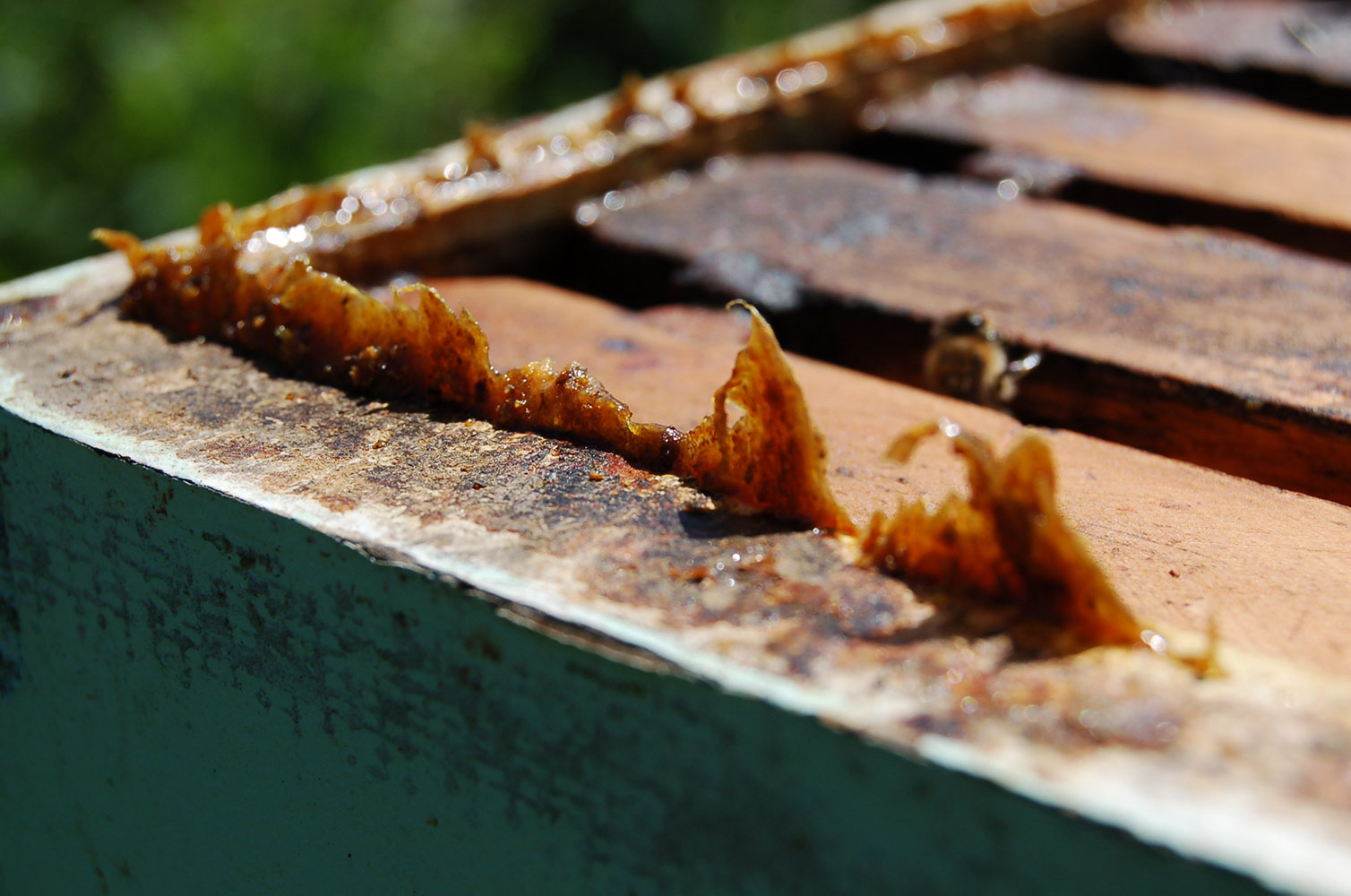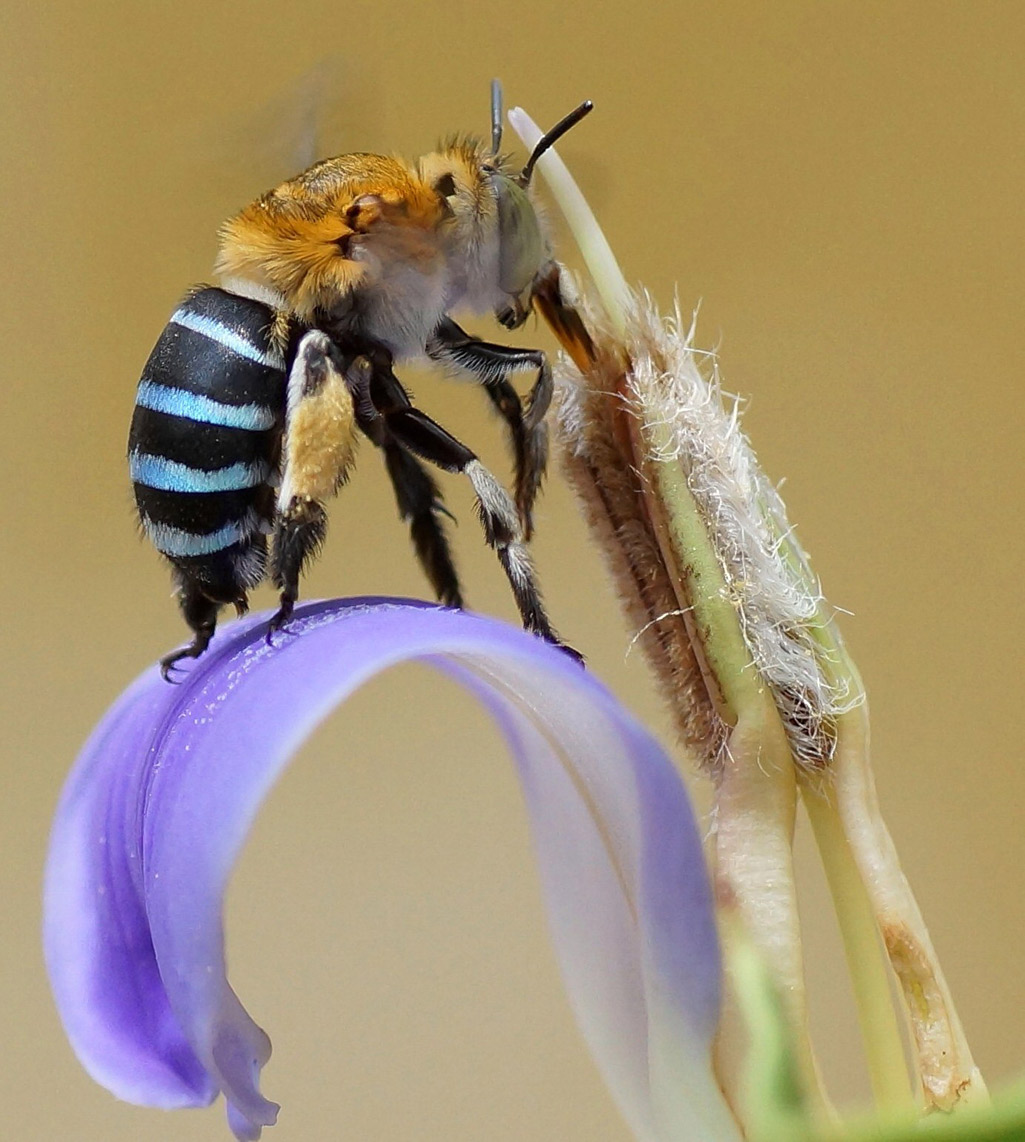Australia's native bees
Australia’s highly diverse native bees range in size from a 2 millimetre midget (the Quasihesma bee) to what in comparison is a 24 millimetre flying bus (the great carpenter bee, Xylocopa). Most Australian native bees are solitary—a single female builds a nest and lays her eggs before dying in autumn, leaving behind larvae that develop over winter. Some are semi-social, however—several female bees cooperate to build a nest, in which they all lay eggs. There are also 14 species of ‘social’ native bees that form large colonies in similar ways to European honeybees and produce honey—including the famous bush tucker, ‘sugarbag’. These are known as ‘stingless’ bees because, unlike the honeybee, they don't have a stinger.
While most native Australian bees are solitary rather than social and so cannot be kept in hives, and the few native species that are social are difficult to keep in large numbers, there are good reasons to promote the role of native bees in agricultural pollination. For example, native bees may be less susceptible than European honeybees to invasive pests. Two species of native stingless bee, Tetragonula carbonaria and Austroplebeia australis, have been shown to have excellent defences against the small hive beetle, which can have a devastating impact in the hives of the European honeybee. Both use a range of strategies against the beetle, including entombing it (and its eggs and larvae) in droplets of resin known as propolis.

Some native bee species could become important pollinators of agricultural crops. Recent research at Western Sydney University and the University of Adelaide has shown the blue banded bee, a solitary bee of the genus Amegilla, to be more efficient than European honeybees at pollinating greenhouse-grown tomatoes. Blue banded bees ‘buzz’ pollinate—meaning that their wings vibrate at such a rate that they cause the flower’s pollen capsules to burst—a technique well-suited to tomatoes. Blue banded bees have been shown to cope well in a greenhouse environment and researchers are now developing a commercially viable breeding program for the species.
Another agricultural crop that has been shown to be pollinated effectively by native bees (in this case, the social Tetragonula species) is macadamia, itself an Australian native. An estimated 6 million macadamia trees in Australia produce around 35,000 tonnes of macadamia nuts per year.






